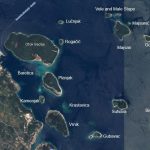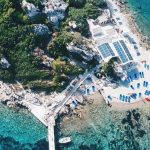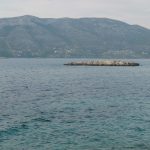After having visited the three largest (and closest to Korčula ) of the Korčula islets, we continue our look at the archipelago.
Lučnjak and Rogačić are small, small islets close to Badija, Rogačić well within swimming distance from Badija (beware of passing nautical traffic if you decide to swim over!), not very interesting actually, no nice beaches on them or anything which will make it forth the trip to go there, except for the idea of being the only person on the islet, or the idea of bragging that you swam to an island next to an island next to an island. In the morning and the evening you will see quite a number of smaller boats here, as the common knowledge among locals is that this is where it’s possible to catch some decent fish still.
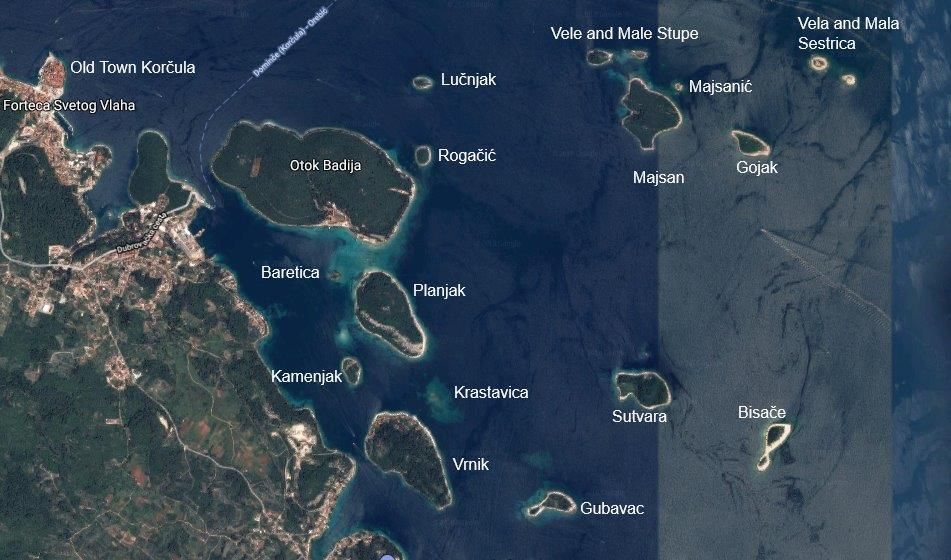
Remaining on the northern part of the archipelago, actually closer to Pelješac then to Korčula itself, we get to Vele and Male Stupe Islets, which have always been interesting because there has always been a bar/restaurant/konoba on the island. Well, obviously not “always”, but in the recent years that place has been very popular with people wanting to go for a beer, glass of local wine or something to eat out on the sea. And, then last year, very popular and fancy waterfront restaurant Moro Beach Stupe opened in that location, catering to a different audience, as it offers food prepared by one of the best chefs in Croatia, remarkable wines and atmosphere. The island has a small pier, where you can bind your boat if you’re coming to Moro or for a swim on the Vele Stupe beach. Male Stupe is smaller still, basically just a rock nearby, it doesn’t really have a beach or anything truly interesting there.
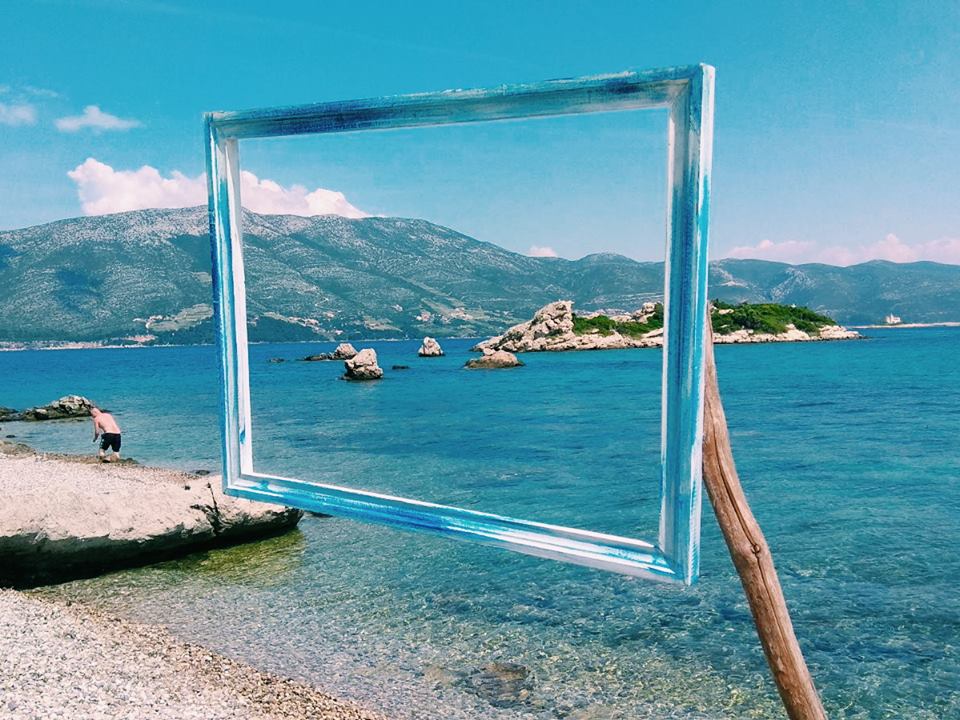
Just to the South of Vele and Male Stupe islet Majsan is located (and his little rocky buddy called Majsanić, which means “Little Majsan”). Majsan has an extremely interesting history, and it has been researched exhaustively by the archaeologists. Most of the findings happened in the 1960, when it was discovered that there was a Roman villa rustica on Majsan, during late antics period the same building was inhabited by a small group of Christian monks, who worshiped one revered grave on the island – supposedly the grave of the St. Maximus the Confessor. Sometime during the early Middle Ages a church dedicated to the same saint was built on the island, and there was a fortress built there as well to protect the benedictine monks who lived there. Today, the island offers the tourists an amazing little beach, with a wooden pier to tie your boat to and go for a walk on the island, so you can see the ruins yourself, and take a nice walk in the woods, as the islet is basically a forest.
To the East of Majsan are the Vela and Mala Sestrica islets (Big and Little Sister), and the larger one of the two has been the home to a lighthouse since 1871 https://www.plovput.hr/pomorska-signalizacija/svjetionici/svjetionik/a/view/id/42, but it has recently been turned into a piece of property you can rent if you really want to get away from everyone. A bit to the South is Gojak, meaning “Naked”, also an unfriendly and uninviting rock, with steep sides.
To the South of those is Sutvara, my personal favourite of the Korčulan islets. There’s stuff on Sutvara: there’s a small pier on the North-facing side of the island, just to the West of the pier are amazing rocky slabs, amazing to lie in the afternoon in the shade from the trees, with the amazing view of all those remarkable vineyards on Pelješac (Postup and Dingač!) at the Western-most side of the island there are two small beaches (one of them facing South, in a loveliest cove), there are several small houses on the island where there’s usually no people, the Eastern side is more “wild” as the jugo wind during the winter hits it heavily. If you decide to go to Sutvara on a boat, just remember that maestral can sometimes start very suddenly and that it gets strong here, making it somewhat difficult to get sheltered by large Badija, so be prepared for that.
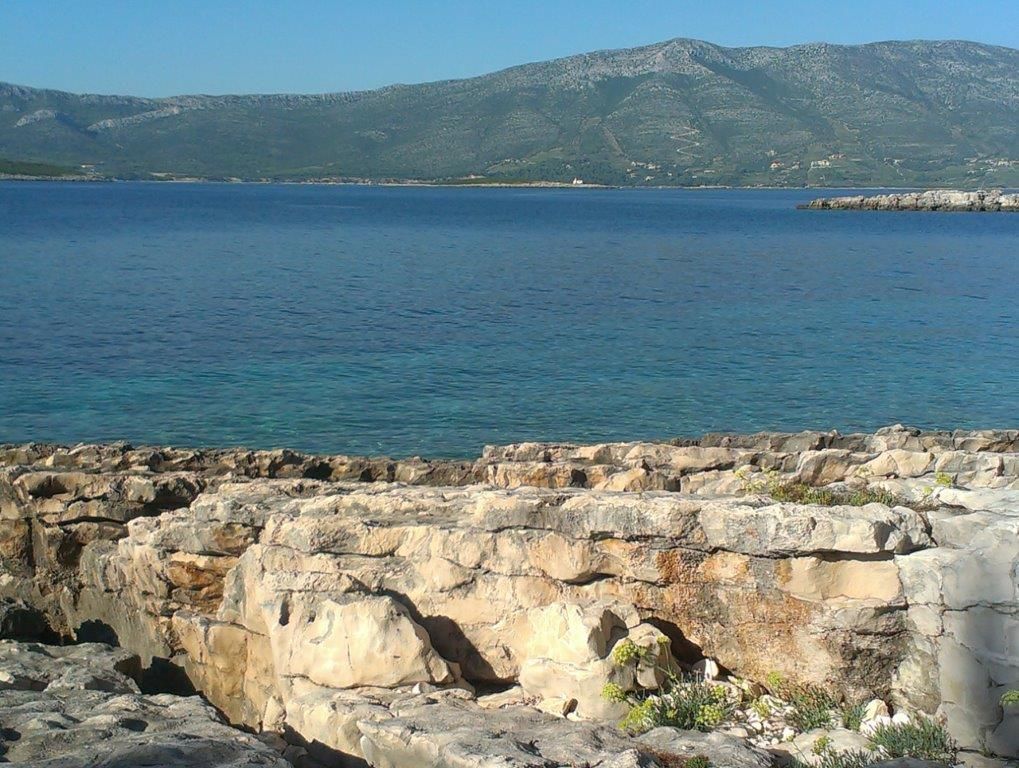
The last two islets are Bisače and Gubavac, both oddly (and similarly) shaped, both quite low, with not much going on on them these days. Gubavac (“The Leper”, indicating that it was in the past used as a quarantine for Korčula town, to protect it from leprosy) is close to Lumbarda, and has some great flat rocky parts on its Eastern side, which is excellent to enjoy on an afternoon, especially if there’s maestral and you’re protected from it by the island. Bisače is much less inviting, without much of anything you might want to go there for – except for birds. There’s a lot of birds on Bisače, so if you’re into bird watching or bird photography, that’s the place to go to. And take a lovely swim while you’re there, enjoy the solitude 🙂
[CORRECTION: A previous version of this article wrongly stated what’s available at the island Vele Sestrice today, saying that it’s just a lighthouse and that you shouldn’t go there]

